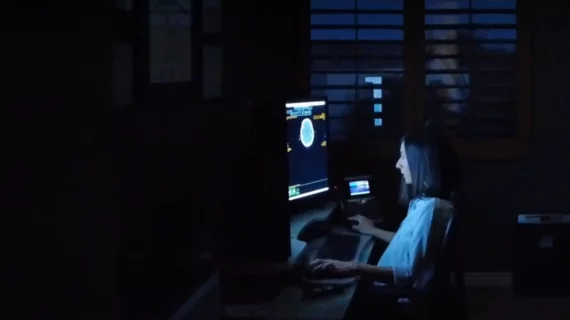AI promises to make a titanic impact on radiology, but most of the attention tends to focus on its ability to identify important findings in medical images. What about the technology’s non-interpretive qualities?
A new analysis published in Academic Radiology detailed some of the many other ways AI can help the specialty on a regular basis. These are 10 ways AI can be used in radiology that do not involve the interpretation of imaging findings:
1. Noise Reduction
AI’s ability to enhance image quality helps radiologists do their job and provide the most accurate diagnosis possible.
“Initial deep learning techniques resulted in over-smooth images with loss of details and compromised visibility of essential structures,” wrote lead author Michael L. Richardson, MD, department of radiology at the university of Washington in Seattle, and colleagues. “However, this has been addressed with more recent techniques involving the use of convolutional neural networks (CNNs) and generative-adversarial networks, resulting in de-noised images without loss of critical information.”
2. Reducing radiation dose and contrast dose
Concerns about the radiation dose associated with CT and PET imaging have increased in recent years, with specialists all over the world working to reduce exposure through new technology solutions and updated protocols. AI can also play a key role in this area, with some algorithms creating “high-quality images directly from low-dose raw sensor data” and others working to turn low-quality PET images into high-quality images.
On a similar note, AI can help reduce the need for contrast agents during MRI scans, helping ease worries related to gadolinium-based contrast agents.
3. Assessing image quality right away
Retaking certain images is a necessary reality in radiology, especially during MRI scans. AI can help ensure “suboptimal images” are identified right away, helping make sure patients don’t have to be brought back in a second time after they have already left the premises.
“Recalling these patients for repeat imaging results in delayed diagnoses, increased costs to the health care system, and in some cases, increased radiation exposure,” the authors wrote.
4. Improving scheduling for “scanners, patients and staff”
As utilization continues to rise, it is crucial to improve the organization of an imaging provider’s equipment. AI can help in this area thanks to the massive amount of data being collected at all times through the use of electronic health records; algorithms can detect “inefficiencies in utilization in scheduling,” the authors explained, helping address such issues before they even happen.
5. Improved billing
“Insurance claim denials can account for as much as a 3–5% loss in revenue,” the authors wrote. “This has led healthcare organizations to turn to AI techniques such as NLP and other machine learning tools for innovative solutions to optimize billing, report classification, and claim denial reconciliation.”
6. Developing and optimizing protocols
AI can help specialists develop an ideal protocol—and make sure technologists stick to the script as much as possible. In addition, a “properly trained CNN might provide an acceptable surrogate for human readers when performing a protocol optimization study.”
7. Worklist prioritization
AI can be used to prioritize urgent findings and enhance the distribution of examinations to radiologists. This remains one of the most well-known non-interpretive uses of AI in radiology, an effective way to keep turnaround times low and provide care to patients who need it the most.
8. Image annotation and segmentation
Annotations help radiologists communicate with patients and track findings over time, and segmentation is a helpful step for focusing on specific aspects of a medical image. AI models can help specialists with these tasks—and image labeling—helping them spend more time on making a diagnoses and delivering the best patient care possible.
This is especially valuable during clinical trials, Richardson et al. explained.
“Image annotation and segmentation remains an important component in oncologic clinical trials where lesions (target or nontarget) are followed from baseline at various time points to assess treatment response,” the authors wrote. “These studies require precise and consistent evaluation of the lesions across different readers at different time points, and can be best optimized using annotations and in some instances automated/semiautomated segmentation or volumetric assessment. Studies have shown that deep learning can efficiently monitor changes and perform quantitative analysis before, during, and after treatment and can also help to predict prognostic endpoints.”
9. Image-based search engines
Machine learning-powered search engines for medical images can be used for commercial and training purposes, allowing users to search for “the visual content of the image.”
10. Detecting, and preventing, adversarial attacks
Cyberattacks on PACS and even medical images themselves are a legitimate threat, one that could get much worse over time. Some algorithms have even been developed that can “trick” a radiologist, creating fake imaging findings that lead to an incorrect diagnosis. Researchers are currently working to combat such attacks with AI technology, according to the study’s authors.
“Methods such as digital image watermarking and ML algorithms to detect tampered images, such as “feature squeezing” or “defensive distillation” have been proposed for the detection of manipulated images,” they wrote. “In the meantime, prevention of an adversarial attack begins with recognition of the problem and by adopting some simple standards of practice.”

